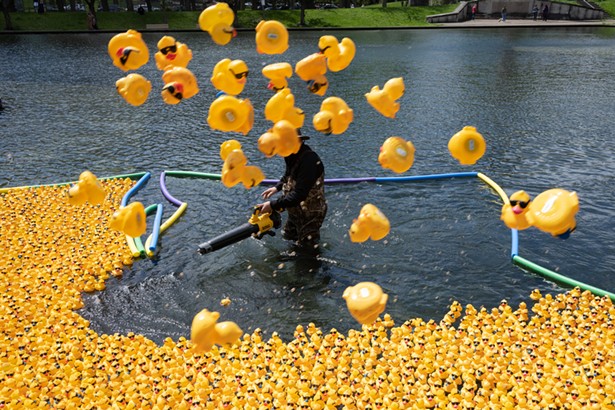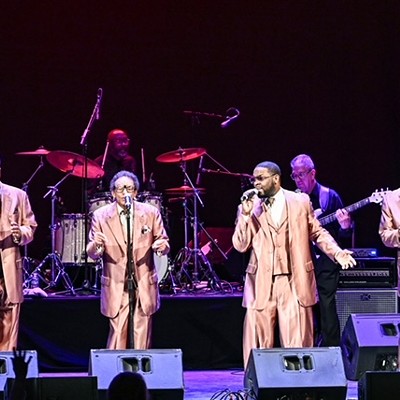Veni, Vedi, Video
Video these days is as familiar to us as air. Americans seem to spend half their waking hours watching video images, and more time than ever shooting them.Yet most of what we see reflects fairly unimaginative use of an eminently accessible medium: lots of talking heads, standard documentation of performances and news events and, perhaps most of all, electronic transmissions designed to get you buying things you don't need.
But like any medium, video can also be art. Ralph Vituccio got interested in it while researching his 1990 documentary on another little-understood genre, performance art. Vituccio's Performance: The Living Art screened at the Berlin International Film Festival and on several PBS stations. It also made him aware of how artists were buzzing about video and using it more -- not only to document their shows, but also to make stand-alone installation pieces and other works.
Cheap to make, reproduce and distribute, video let artists exhibit to a wider audience. Vituccio used Performance to leverage grants from the National Endowment for the Arts and the Pennsylvania Council on the Arts and started looking into video's past, focusing on interviews with artists who made the medium their own after the introduction in the 1960s of the first portable video systems.
After a few years of stops and starts, Vituccio and his collaborator, electronic media artist Andres Tapia-Urzua, have finally completed When Video Came, a fast-paced 43-minute survey of independent video's formal innovations, artistic significance, and the challenge it poses to corporate video's stranglehold on the public imagination.
Tapia-Urzua works for Vituccio, who heads Carnegie Mellon University's Media Design Center, the school's in-house production headquarters. Both men are teachers, too, and found many students unaware of the history of the field they were studying. Tapia-Urzua is also responsible for the When Video Came's rapid-fire editing, a breathless montage of interviews and clips of everything from 1950s broadcast pioneer Ernie Kovacs to Michael Moore's The Awful Truth. "When you're teaching today, you need something [snaps his fingers]," he says.
When Video Came notes the power that video (as opposed to the more costly film medium) offers to experiment, and especially to learn how to deconstruct sounds and images by making work oneself. Artists including Woody Vasulka ("I'm always entertained by my own failures") embrace video's pioneer spirit, while the medium's adaptability is noted by John Sanborn, who calls it "a great synthesizer." Other experts include art critic and historian Gene Youngblood, Guggenheim Museum curator John Hanhardt, Pittsburgh-based artist Paul Glabicki, and Bill Judson, longtime head of the Carnegie Museum of Art's recently defunct Film and Video Department.
Vituccio and Tapia-Urzua hope to sell When Video Came to colleges and universities, partly to inspire independent producers but also to provide a context for work being done today. Video is being put to some interesting uses, including at clubs where veejays wield machines that manipulate images just as deejays would electronically manipulate music. And then there's Mind Bomb TV, a group that reworks TV commercials to contradict their original message (and four of whose "hacked" commercials will screen at When Video Came's June 28 premiere).
Some people's idea of edgy video is MTV, which used to show some experimental work but is now "the watered-down version of using the language of video and film in a new way," says Vituccio. As artist Bill Viola says in When Video Came, "Society is basically illiterate in the medium."
Indeed, media literacy -- the notion that people should know how to read images and sounds just as they would text -- concerned virtually everyone interviewed for When Video Came, says Vituccio. That's not surprising, since the media literacy movement grew largely out of the video-art world. Lately, the concerns of video artists have trended away from the political engagement and formal experimentation of the pioneers and toward issues of personal identity. Even so, in an increasingly corporate televisual environment the important thing is to support independent points of view. "Now more than ever," Vituccio says, "it's absolutely necessary to have these voices."














